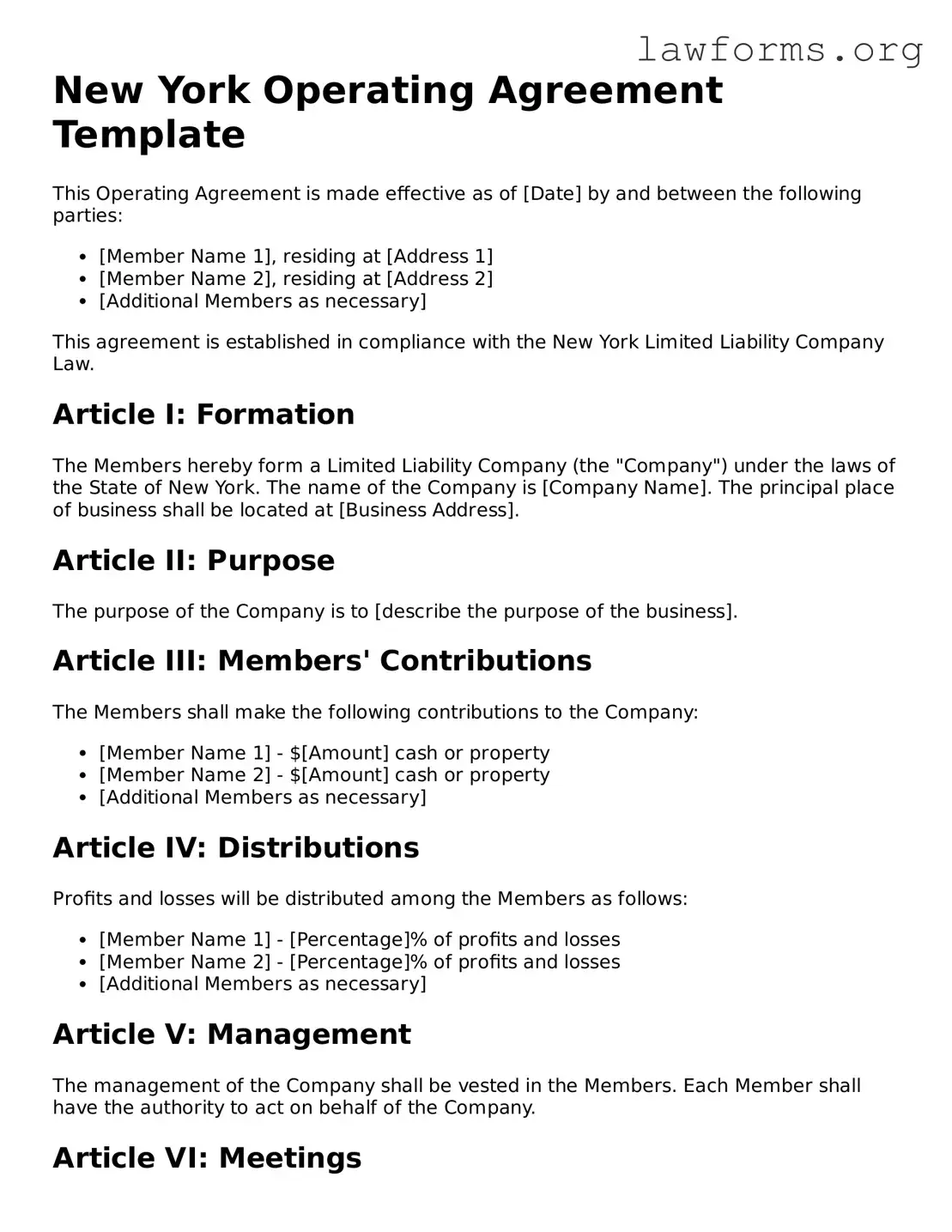New York Operating Agreement Template
This Operating Agreement is made effective as of [Date] by and between the following parties:
- [Member Name 1], residing at [Address 1]
- [Member Name 2], residing at [Address 2]
- [Additional Members as necessary]
This agreement is established in compliance with the New York Limited Liability Company Law.
Article I: Formation
The Members hereby form a Limited Liability Company (the "Company") under the laws of the State of New York. The name of the Company is [Company Name]. The principal place of business shall be located at [Business Address].
Article II: Purpose
The purpose of the Company is to [describe the purpose of the business].
Article III: Members' Contributions
The Members shall make the following contributions to the Company:
- [Member Name 1] - $[Amount] cash or property
- [Member Name 2] - $[Amount] cash or property
- [Additional Members as necessary]
Article IV: Distributions
Profits and losses will be distributed among the Members as follows:
- [Member Name 1] - [Percentage]% of profits and losses
- [Member Name 2] - [Percentage]% of profits and losses
- [Additional Members as necessary]
Article V: Management
The management of the Company shall be vested in the Members. Each Member shall have the authority to act on behalf of the Company.
Article VI: Meetings
Regular meetings of the Members shall occur at least annually. Additional meetings may be called as necessary by any Member.
Article VII: Amendments
This Operating Agreement may be amended only by a written agreement signed by all Members.
Article VIII: Miscellaneous
This Agreement shall be governed by the laws of the State of New York. In the event that any provision of this Agreement is deemed invalid or unenforceable, the remaining provisions shall remain in full force and effect.
IN WITNESS WHEREOF, the Members have executed this Operating Agreement as of the day and year first above written.
- ___________________________
[Member Name 1], Member
- ___________________________
[Member Name 2], Member
- ___________________________
[Additional Members as necessary]
